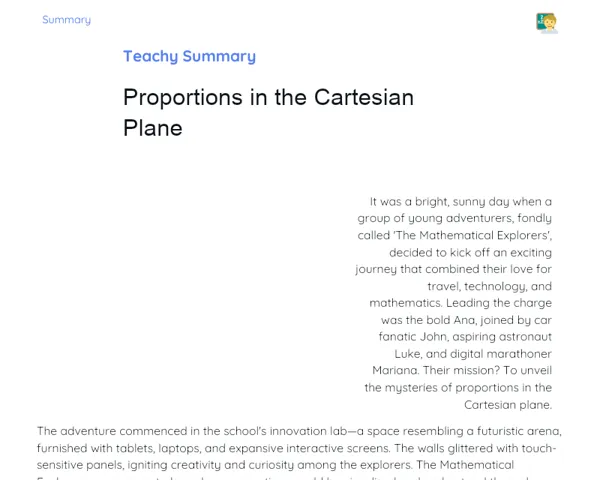Objectives
1. 🎯 Grasp the concept of Arithmetic Progression (A.P.), identifying its structure and key properties.
2. 🎯 Master the skill to find specific terms in an A.P. using the general formula and patterns of increments.
3. 🎯 Utilize knowledge of A.P. in everyday scenarios and challenging mathematical problems, fostering both practical and theoretical understanding.
Contextualization
Did you know that Arithmetic Progression is not merely a mathematical idea but a vital instrument in various fields, including music? Numerous musical compositions rely on arithmetic sequences to create harmonious note arrangements. For instance, if you play piano keys in an arithmetic sequence, the spacing between each note remains uniform, resulting in a soothing and melodious sound. This showcases the deep connection between mathematics, art, and our day-to-day lives, highlighting the significance of understanding and using concepts like A.P.!
Important Topics
Definition of Arithmetic Progression (A.P.)
An Arithmetic Progression is a sequence of numbers where the difference between any two consecutive terms remains constant. This constant difference is termed the common difference. For instance, in the A.P. 2, 4, 6, 8..., the difference is 2.
-
To identify whether a sequence is an A.P., you need to check if the difference between consecutive terms remains the same.
-
The general formula for the 'n-th' term of an A.P. is: a_n = a_1 + (n - 1)d, where a_1 is the first term and 'd' signifies the common difference.
-
Real-life application: Financial planning, where arithmetic progression aids in calculating interest rates or regular payments.
Calculation of Specific Terms
Finding specific terms in an A.P. is crucial for tackling mathematical challenges and applying them in real-world contexts. This is achieved through the general formula, where knowing the first term, the common difference, and the desired term number enables us to determine the value of that term in the sequence.
-
The formula a_n = a_1 + (n - 1)d lets you calculate any term 'n' in an A.P., an invaluable skill for solving math problems and everyday scenarios.
-
Practicing the calculation of terms enhances your understanding of how A.P. functions and how the difference influences the sequence.
-
Example: To find the 10th term of an arithmetic sequence with a_1 = 3 and d = 2, calculate 3 + (10-1) * 2 = 21.
Practical Applications of A.P.
Beyond being just a mathematical tool, Arithmetic Progressions are often employed in real-life situations. From simple financial calculations to complex engineering designs, understanding and applying the concept of A.P. can be crucial outside the classroom.
-
In engineering, A.P.s are applied to construct structures like stair steps or wheel rims where maintaining a consistent gap between components is essential.
-
In computer science, A.P.s are utilized to optimize algorithms and sequences of tasks performed at consistent intervals.
-
In everyday life, grasping A.P. aids in organizing and planning activities, such as drafting schedules or managing resources.
Key Terms
-
Arithmetic Progression (A.P.): A sequence of numbers where the difference between any term and the term that precedes it is always consistent.
-
Common Difference (d) of the A.P.: The fixed constant that defines the difference between consecutive terms in an A.P.
-
General Term (a_n) of the A.P.: Formula that enables calculation of any term in the arithmetic sequence, based on the first term, the common difference, and the intended term number.
For Reflection
-
How can a grasp of Arithmetic Progressions benefit your daily life or future professional endeavors?
-
Why is it crucial to practice calculating terms in A.P. even in an age where technology can perform these calculations automatically?
-
How can recognizing A.P.s enhance your ability to tackle complex mathematical problems?
Important Conclusions
-
We delved into the intriguing world of Arithmetic Progressions (A.P.), learning how to recognize, calculate terms, and apply this knowledge in real-life contexts.
-
We discovered that in an A.P., the difference between any two consecutive terms is constant, known as the common difference, facilitating numerous types of calculations and practical uses.
-
We acknowledged that A.P. is not only a mathematical tool but also an essential skill across various domains, from music to engineering, underscoring its significance and pervasiveness.
To Exercise Knowledge
- Create an A.P. centered around a theme of your choice (like a sequence of colors, songs, or books) and present it in class, explaining its common difference and the method of construction. 2. Calculate the tenth term of an A.P. starting with 6 and having a common difference of 3. 3. Challenge yourself to solve a real-life problem using A.P., like planning out task distribution for a week, ensuring the number of tasks progresses each day.
Challenge
Reason Detective Challenge: Formulate a sequence of numbers that initially seems like an A.P., but isn't. Invite a friend to uncover the 'hidden' common difference and explain why your sequence doesn't qualify as an A.P. Share your 'mystery' and the solution with the class!
Study Tips
-
Practice sketching graphs of A.P.s to better visualize term behavior, as this strengthens your understanding and retention of the concept.
-
Utilize math apps that enable you to generate and explore A.P.s with varying common differences and first terms, such as 'GeoGebra' or 'Wolfram Alpha'.
-
Try associating Arithmetic Progressions with other numerical sequences, like Geometric Progressions or Fibonacci sequences, to comprehend the connections and distinctions.



